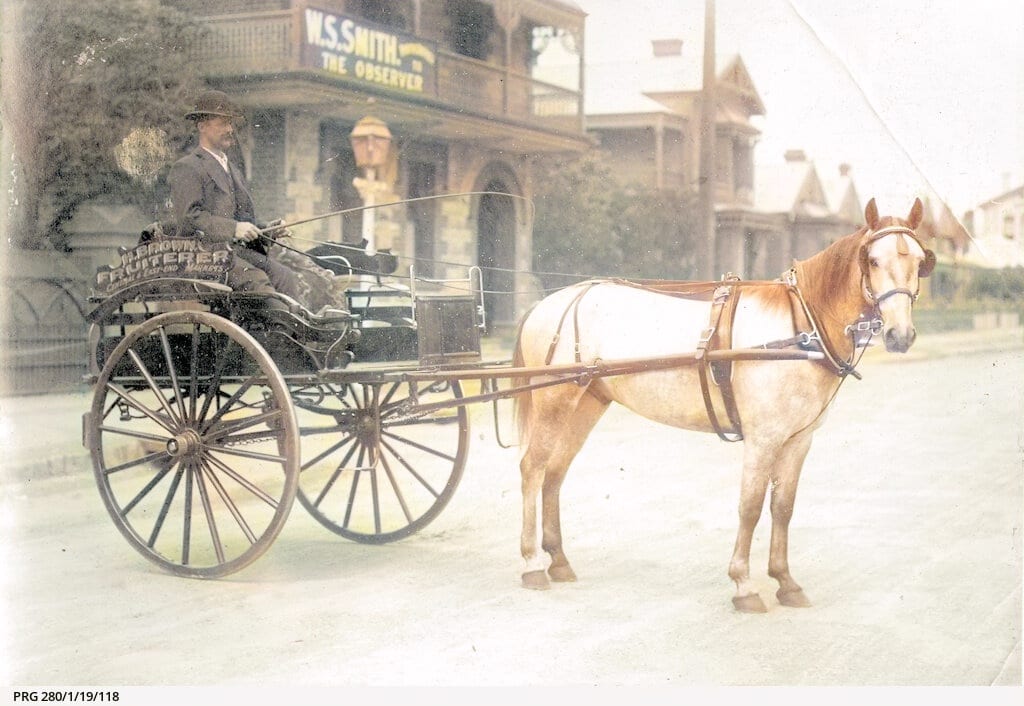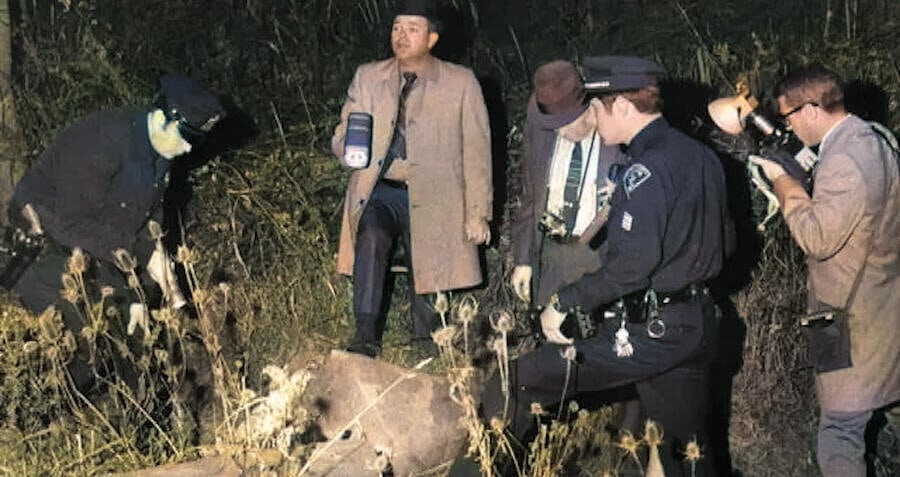On this day in True Crime History, we revisit the 16th of November, a date filled with bullion heists, the Alphabet Murder Mystery, a tragic massacre in Queensland, a hanging for burglary in early Australia plus much, much more.
1795: 🔒 William Smith Hanged for Burglary in Sydney
On this day in 1795, William Smith met his fate at the gallows in Sydney. His execution followed a conviction for burglarizing the house of William Parrish at Prospect Hill.
Smith, with his accomplices, committed the crime by breaking into Parrish’s dwelling with force, stealing items valued at approximately 32 shillings, including a piece of cloth, a velvet waistcoat, three other waistcoats, two flannel jackets, and some brooches.
This would be equivalent to about $260 AUD in today’s money. 🏠⚖️🔒

1798: ⚓ British Seamen Kidnap and Press Gang US Sailors
On this day in 1798, British seamen boarded the U.S. frigate Baltimore and engaged in the controversial practice of impressment, often referred to as “shanghaiing.”
Thus 55 US sailors were press ganged into service (enslaved) onto a ship by compulsion, without notice, into the British Royal Navy. This contributed greatly to the tensions that eventually led to the War of 1812 between the United States and the United Kingdom. ⚓

1906: ⚖️ Notella Habibulla’s Arrest Unveiled by a Bolting Horse attached to a Bloodstained Buggy
On this day in 1906, Notella Habibulla faced the gallows at Adelaide Gaol, accused of murdering his wife, Edith, on Bristol Street.
The dramatic chain of events leading to his arrest began with a startling discovery by the police—an abandoned horse and buggy covered in bloodstains standing outside the residence of the victims mother. This ominous find raised immediate suspicions of a violent crime.
What made this discovery even more compelling was Habibulla’s own account. He reported to the authorities that his horse had bolted uncontrollably with the buggy. This seemingly innocuous explanation, however, only deepened the mystery. The police decided to detain him and delve further into the matter.
Their investigation took a gruesome turn when they dragged a nearby river, unearthing a bag containing the dismembered remains of a woman. This unfortunate victim was none other than his wife of 6 months Edith.
As the detectives continued their inquiry, they found damning evidence at the couple’s Bristol Street residence—a trail of marks indicating a body had been dragged and extensive bloodstains scattered across the backyard. To make matters worse for Habibulla, the victim’s blood-soaked garments were concealed beneath a bed.
The culmination of these chilling discoveries left no room for doubt. Notella Habibulla was promptly arrested and charged with the brutal murder of his wife, all uncovered owing to the powerful role played by a bolting horse. ⚖️🐎🔍

1911: 😢 The Ching Family Massacre
On this day in 1911, George Silva committed a heinous act that would come to be known as the Ching family massacre in the small town of Alligator Creek located 20 kilometres south of Mackay, Queensland.
George Silva, driven by malevolence, ruthlessly shot and bludgeoned to death six members of the Ching family. The victims included Agnes Ching, a 45-year-old mother, and her children Maud (15), Eddie (9), Dorrie (7), Hughie (5), and Winnie (1). This brutal act of violence shocked the community and left scars that would last for generations.
However, amidst the darkness, stories of survival and resilience emerged. Several family members managed to escape the assailant’s fury, including Charles and Agnes Ching’s three older children: Florence, Henry, and Henrietta. They had left home before the tragedy unfolded, and their absence spared them from the horrors that befell their family.
In the aftermath of the massacre, Charlie Ching, the lone survivor of the immediate family, found the strength to rebuild his life. Devastated by the loss of his wife and five children, he made the difficult decision to leave Mackay and Australia in 1915. He sought solace in Hong Kong, returning to his native village of Shataukok and seeing out his remaining years, where he remarried and welcomed another child.
The Ching family massacre of 1911 remains a haunting chapter in Mackay’s history, a somber reminder of the enduring impact of such senseless acts of violence on survivors and communities. 😢🏠⚖️

1971: 🕵️♂️ Carmen Colón, Victim of the Alphabet Murders Disappears
On this day in 1971, Carmen Colón, a 10-year-old girl, tragically disappears and becomes a victim of the Alphabet Murders.
The Alphabet murders (also known as the Double Initial murders) are an unsolved series of murders that occurred between 1971 and 1973 in Rochester, New York.
The Alphabet Murders involved a series of killings where the victims had surnames that began with the same letter as that of their first name. Each victim had been murdered in like manner before each of their bodies were discarded in or near a town or village with a name beginning with the same letter as the victim’s name. 🕵️♂️🔍

1989: 💔 Salvadoran Army Death Squad’s Brutal Attack on Jesuit Priests
On this day in 1989, a horrific tragedy unfolded at Jose Simeon Canas University in El Salvador. A Salvadoran Army death squad launched a brutal attack, resulting in the deaths of six Jesuit priests and two others. 💔🕊️🙏
The Salvadoran Civil War, which lasted from 1980 to 1992, was marked by intense conflict between the government and leftist rebel groups. During this turbulent time, various factions within the military and government resorted to violence, including extrajudicial killings and human rights abuses, to suppress dissent and maintain power.
The six Jesuit priests killed in this tragic incident were known for their advocacy of peace, social justice, and human rights in El Salvador. Their deaths sent shockwaves throughout the international community and drew attention to the human rights violations occurring in the country. 🌍🕯️✝️

2001: 💰 Brinks-Mat Bullion Heist Member Murdered
On this day in 2001, Brian Perry, a key figure linked to the infamous Brinks-Mat bullion heist, met a violent end.
The Brinks-Mat heist, a 1983 robbery at the Heathrow International Trading Estate in London, yielded approximately £26 million in gold, diamonds, and cash.
Detectives had certain clues pointing to Mickey McAvoy’s involvement in the Brinks-Mat heist. Notably, McAvoy’s two Rottweiler dogs at his newly acquired mansion were named ‘Brinks’ and ‘Mat.’ As McAvoy’s trial approached, he entrusted his share of the stolen gold to contact Brian Perry. However, Perry never returned the gold to McAvoy, and instead, he served time for handling it.
Upon Perry’s release from prison, and while returning from a shopping trip, he was ambushed and shot three times in the back of his head, resulting in his immediate death. This murder added another layer of mystery to the complex and shadowy world of the Brinks-Mat heist, leaving investigators and the public eager to uncover the truth behind his killing.
Despite extensive investigations and efforts, the whereabouts of a significant amount of the stolen bullion remain a mystery. 💼🔍🔫

That’s all for the 16th of November in history. Perhaps something will happen on your 16th November that will go down in history, never to be forgotten. Have a great day! In the meantime, be sure to book in to go on a Dark Stories True Crime Tour soon!